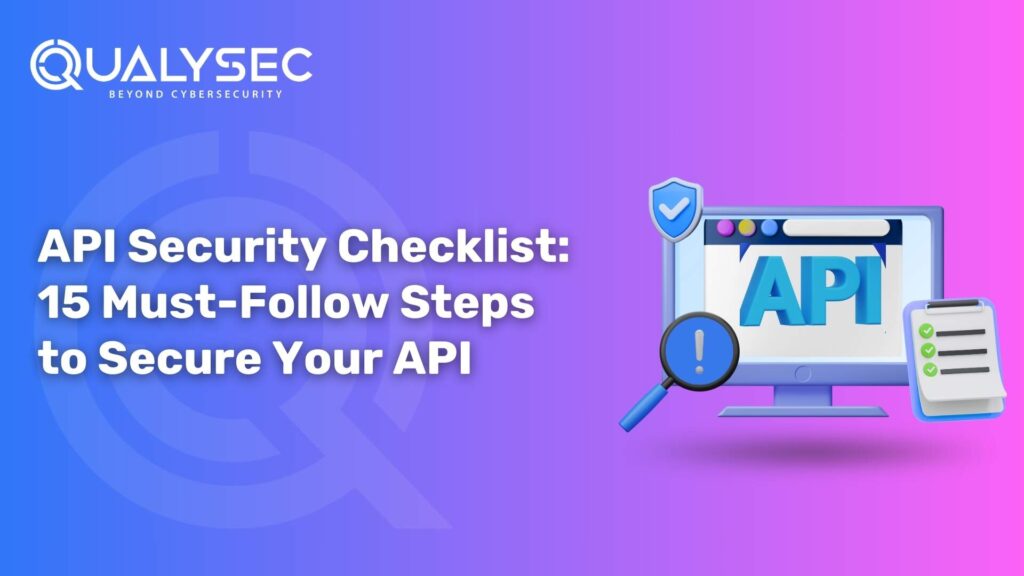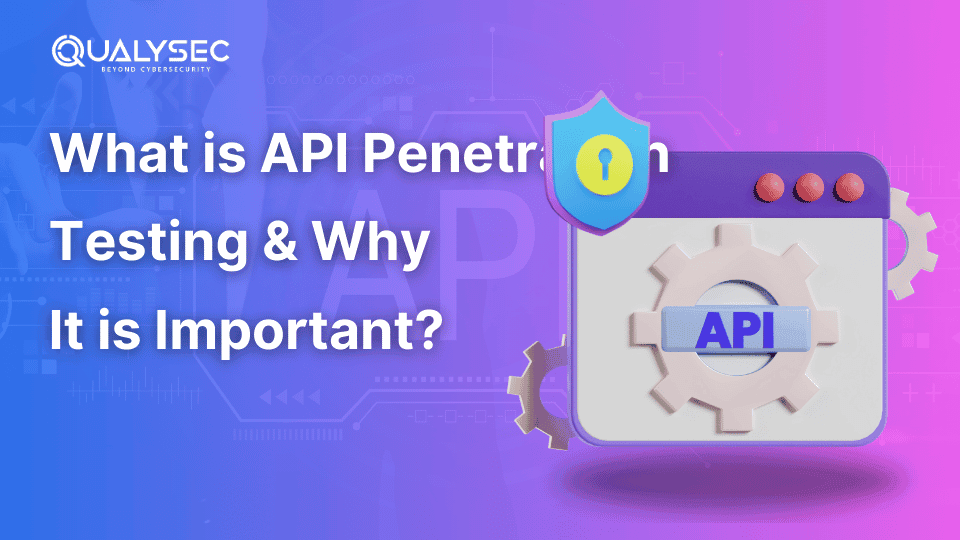API Security Checklist: 15 Must-Follow Steps to Secure Your API
APIs serve as the fundamental infrastructure for contemporary applications, providing hassle-free data communication to power mobile applications and enterprise-level integrations. Security of APIs remains essential since these interfaces attract attacker focus as primary targets. To defend their APIs and sensitive data, organizations must implement this API Security Checklist containing 15 fundamental protection steps, as listed below by Qualysec Technologies. 15-Step API Security Checklist 1. Enforce Strong Authentication and Authorization Implementing both strong authentication protocols and authorization controls with precise access rules will shield your API Security Checklist system. Your organization should use industry-standard authentication systems such as OAuth 2.0 or OpenID Connect to authenticate user identities securely. Role-based access control (RBAC) allows administrators to define exact permission rules that determine what resources users within each role can access. A scheduled key and token rotation process should exist with a protocol for instant credential revocation for all compromised or outdated API authorizations. Deploying mutual TLS (mTLS) as a mandate establishes trust between interacting services through mutual authentication, which secures a zero-trust operational environment. 2. Use HTTPS Everywhere Every API Security Checklist transmission needs HTTPS protocols as their mandatory standard because this protects information from eavesdroppers and transit-based malicious modification. All API communication must use TLS 1.2 or stronger versions, which must be paired with sturdy cipher suites to provide secure encryption. Secure your API interactions with HSTS to force browser clients to communicate with your platform through HTTPS, which blocks downgrade attacks. The implementation of certificate pinning is an advanced security measure that actively prevents certificate spoofing attacks. HTTP endpoints must always remain encrypted without exception for both internal and external API interfaces because they create redundant weak points. Read More: What are API Security Risks and How to Mitigate Them? 3. Validate and Sanitize Inputs Organizations that extensively validate and sanitize their inputs achieve protection from numerous security breaches, including injection attacks, and maintain data integrity. The API Security Checklist uses OpenAPI schemas to define strict request specifications, which trigger automatic rejection of all undefined format requests or requests having content that deviates from expected patterns. Before processing or storage, all incoming user data must undergo thorough sanitization, which identifies and removes potentially damaging content, including malicious scripts and SQL statements. Your API security posture improves through this preventive strategy, which minimizes potential points of attack. 4. Implement Effective Rate-Limiting API Security Checklist depends heavily on rate-limiting systems, which protect against brute-force attacks while defending against credential compromise attempts and denial-of-service incidents. API endpoint sensitivity determines appropriate rate limit assignment because critical functions need tighter regulation, yet general usage endpoints require more flexibility. Repeat API violations should be handled through penalties implemented through exponential backoff systems. API responses should include informative rate limit headers that reveal client status and available allowances to users while promoting responsible consumption and maintaining transparency. Related content: Read our guide to Api Security Solution. 5. Minimize Data Collection and Retention Make sure to collect data only to the necessary amount needed to operate your API correctly and efficiently. A reduced attack surface directly results from less stored data, so organizations must establish specific data storage policies that include secure deletion and anonymization protocols for data after its functional requirements expire. Safeguard sensitive information by keeping it restricted to essential log cases, while you need to apply advanced cryptographic methods that encrypt data during rest periods. The deployment of secure handling practices together with data minimization continues to increase user privacy and diminish the potential damage from data breaches. 6. Simplify API Error Messages The creation of API error responses requires engineers to strike a precise balance between delivering clear direction while also securing protected data. When clients encounter errors during validation, you should present direct feedback that explains the particular problem. When server-side issues occur, you should display standardized messages that include “Internal Server Error” or “Something went wrong.” To establish semantic context, every error must receive its proper HTTP status code alignment, such as using 400 for client errors, together with 500 for server-based errors. Add a correlation ID to each response to help developers monitor particular requests within their internal logs while maintaining error secrecy from external users. Authorize specific personnel to view and record complete error logs in a secure system. 7. Automate Continuous Security Testing Installing security assessment systems directly within the software development process is essential for preventing future risks. Businesses should utilize Static Application Security Testing (SAST) and Dynamic Application Security Testing (DAST) tools that provide code- and runtime-based security assessments. Secret detection tools should be integrated into the system to stop sensitive credential leakage. New code submitted in pull requests should activate automated scans through proper configuration. This mechanism executes immediate code scrutiny. Security experts should conduct periodic manual penetration tests to identify complex vulnerabilities because automation establishes a good baseline. Learn more in our Complete Guide to API Penetration Testing. Latest Penetration Testing Report Download 8. Monitor API Traffic in Real-Time API traffic monitoring in real time functions as a security threat detection tool, which also helps prevent performance-related issues from arising. Language orchestration techniques that combine centralized logging with sophisticated analytics platforms help organizations obtain complete visibility into API use patterns, request error counts, and geographical sourcing. Your system should implement automated detection protocols to warn about atypical events, such as rapid traffic increases, multiple authentication failures, and unusual request source locations. Rigorous log analysis must happen to detect malicious access attempts and unauthorized usage within these logs. With robust real-time monitoring capabilities, your organization can detect security incidents swiftly and respond immediately. 9. Treat API Keys & Access Tokens with Caution API keys and access tokens operate as fundamental authorization mechanisms that determine who accesses your system’s valuable resources and features. Your system security depends on unique key distribution for every client or service interacting with your system. The keys need thorough permission control, including minimal privileges essential for carrying out intended tasks. Implementing short-lived tokens serves security purposes because they create a





